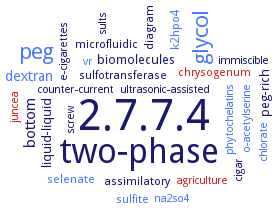Please wait a moment until all data is loaded. This message will disappear when all data is loaded.
Please wait a moment until the data is sorted. This message will disappear when the data is sorted.
ATP-S activity/expression can also be controlled/modulated by S-limitation1 (SLIM1), a transcription factor identical to ethylene-insensitive3-like (EIL3) transcription factor in Arabidopsis and the regulator of many S-deficiency responsive genes
growth on Se enriched soil, induces APS2 expression levels in young (or mature) leaves and roots in Camellia sinensis
growth on Se enriched soil, suppresses APS1 expression levels in young (or mature) leaves and roots in Camellia sinensis
the enzyme in cultured cells responds to sulfate starvation
-
the enzyme responds to chilling or cold stress
the enzyme responds to increased cadmium level
the enzyme responds to increased cadmium level, increased salinity, and infection by Phytopthorainfestans and/or Botrytiscinerea
-
the enzyme responds to increased glutathione level
the enzyme responds to increased light irradiation
the enzyme responds to sulfate starvation, and increased salinity, but not to increased light irradiation, H2O2, and glutathione level
-
the enzyme responds to sulfate starvation, increased cadmium level, increased salinity, and infection by Phytopthora infestans and/or Botrytiscinerea, but not to increased light irradiation. S-depletion mediates regulation of ATP-S activity/expression. ATP-S isoforms can be differentially expressed by S-depletion, e.g. isozyme APS3, while isozyme APS2 is insensitive to S-depletion. Arabidopsis thaliana overexpressing or disruption in MYB51-gene shows alterations in ATP-S-transcript levels and activity. Transcription regulation of Arabidopsis thaliana APS genes by external factors, detailed overview
the enzyme responds to sulfate starvation, increased cadmium level, increased salinity, and infection by Phytopthora infestans and/or Botrytiscinerea, but not to increased light irradiation. S-depletion mediates regulation of ATP-S activity/expression. ATP-S isoforms can be differentially expressed by S-depletion, e.g. isozyme APS3, while isozyme APS2 is insentivie to S depletion. Expression of both ATPS1 and ATPS3 isoforms is controlled by all six GSs-related MYBTFs, namely MYB28, MYB29, and MYB76, MYB51, MYB34, and MYB122. Isozymes ATPS1 and ATPS3 are strongly associated with the control of synthesis of aliphatic and indolic GSs, respectively. Arabidopsis thaliana overexpressing or disruption in MYB51-gene shows alterations in ATP-S-transcript levels and activity. Transcription regulation of Arabidopsis thaliana APS genes by external factors, detailed overview
the enzyme responds to sulfate starvation, increased cadmium level, increased salinity, and infection by Phytopthora infestans and/or Botrytiscinerea, but not to increased light irradiation. S-depletion mediates regulation of ATP-S activity/expression. Transcription regulation of Arabidopsis thaliana APS genes by external factors, detailed overview
the enzyme responds to sulfate starvation, increased cadmium level, increased salinity, and infection by Phytopthorainfestans and/or Botrytiscinerea, but not to increased light irradiation. S-depletion-mediates regulation of ATP-S activity/expression. Expression of both ATPS1 and ATPS3 isoforms is controlled by all six GSs-related MYBTFs, namely MYB28, MYB29, and MYB76, MYB51, MYB34, and MYB122. Isozymes ATPS1 and ATPS3 are strongly associated with the control of synthesis of aliphatic and indolic GSs, respectively. Arabidopsis thaliana overexpressing or disruption in MYB51-gene shows alterations in ATP-S-transcript levels and activity. Transcription regulation of Arabidopsis thaliana APS genes by external factors, detailed overview
the enzyme responds to sulfate starvation, increased light irradiation, and chilling o cold stress
-
under Se-exposure and S-deficiency, Stanleya pinnata hyperaccumulates and tolerates selenium due to its ability to convert SeO24- to non-toxic organic-seleno-compounds by downregulating isozymes APS1, APS2, and APS4. Under S-sufficient and Se-exposure, adoption of different types of regulatory mechanisms and subcellular localization are revealed in Stanleya pinnata, where Se upregulates APS1 and APS4 but is not able to affect APS2 in Stanleya pinnata
-
the enzyme responds to increased cadmium level

-
the enzyme responds to increased cadmium level
-
the enzyme responds to increased cadmium level
-
the enzyme responds to increased glutathione level

-
the enzyme responds to increased glutathione level
-
the enzyme responds to increased light irradiation

-
the enzyme responds to increased light irradiation
-




 results (
results ( results (
results ( top
top





